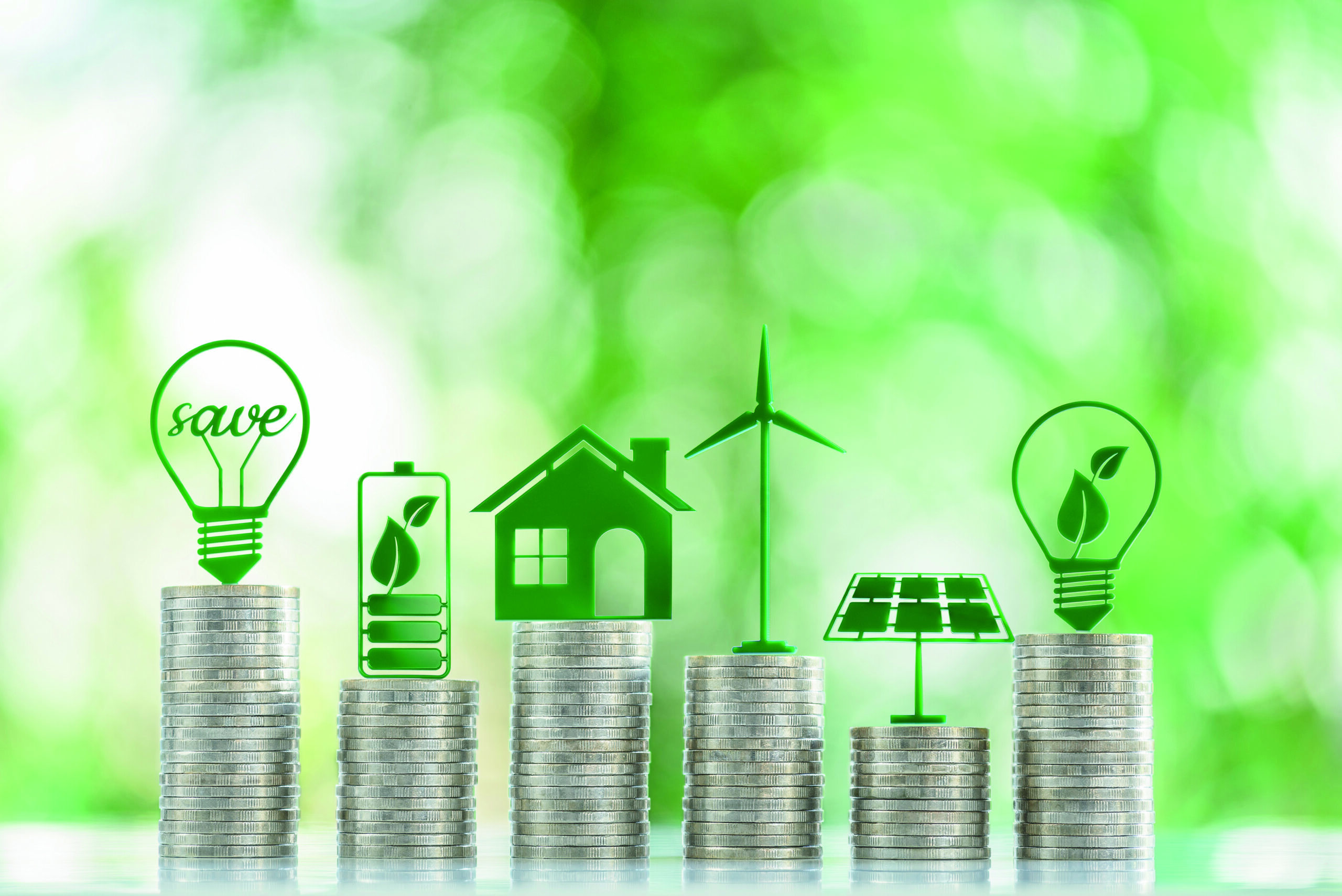Deep impact: Special report on impact investing
Impact investing is making its mark on the private credit space. Kathryn Gaw and Suzie Neuwirth report…
It is no longer enough to simply offer investors a decent return on their money. Impact investing is on the rise, with a number of private credit funds available that advertise their green and ethical credentials. The private credit sector’s push towards the wealth market is set to accelerate this trend, as individuals prioritise both planet and profits.
Towards the end of last year, BlueOrchard – an impact investment manager which is part of the Schroders Group – launched an impact credit fund dedicated to improving financial inclusion worldwide. A month later, BNP Paribas Asset Management launched a climate impact infrastructure debt fund, designed to finance climate change mitigation. In January of this year, Allianz Global Investors raised €300m (£257m) from approximately 10 European investors in the first closing of its latest European private credit impact fund. And Avenue Capital has spoken about its imminent plans to launch a fund targeting private credit investments which have an environmental impact.
Earlier this year, impact investment adviser Phenix Capital Group reported that private debt impact funds had raised €45bn in total capital, with this figure expected to rise as more fund launches take place.
“Traditionally, impact investing was primarily centred around impact equity, but the past 10 to 15 years have witnessed a notable rise in impact credit funds,” says Jim MacHale, a partner in Clifford Chance’s global private credit practice.
“Unlike the conventional ESG approach, impact credit focuses on lending to businesses capable of delivering significant and measurable social and/or environmental impact while ensuring financial returns.
“This approach proves advantageous for businesses seeking capital for growth without experiencing dilution of shareholding/control, a common outcome in impact equity investments.
“The growing popularity of impact credit makes it a relevant and sought-after avenue in the private credit space.”
According to a recent report from Allianz Global Investors on impact credit funds, the rise in demand is being fuelled by a sense of inequality, climate change and Covid-19. Unlike traditional ESG-themed investments, impact investing is intended to generate “lasting material positive change,” the Allianz report said. But this language leaves a lot of room for interpretation.
ESG investing started to grow in popularity around 15 years ago, and the acronym is now a common feature in most portfolios. PwC has estimated that by 2027, ESG assets are on pace to constitute 21.5 per cent of total global assets under management. With such a wealth of opportunity available for qualifying investments, it is no wonder that there has been a green-rush in the space.
“While financial return is still the main driver for most investors, impact is becoming seen as an increasingly important characteristic and more investors are looking to incorporate such a dynamic into their portfolios,” says Aaron Hay, director of sustainable investment, private credit, Fidelity International.
“Though impact has been a more familiar concept within equity in the past, we are now seeing more credit products starting to drive impact through not only lending to well-developed companies but also working with companies at an earlier stage of their sustainability path to speed up their sustainability credentials alongside financial metrics.”
Beware of greenwashing
However, while demand is currently robust, investors are acutely aware of the risk of greenwashing and fund managers are working hard to ensure that their impact products are having the desired effect.
For Fidelity’s Hay, a good impact credit fund should have a clearly defined theory which covers: what the impact will be; how the impact will be executed, while sitting alongside and supplementing financial returns; and how impact will be measured and reported upon.
“To help with the definition of impact, one can also use defined parameters and already widely accepted frameworks such as the 17 UN Sustainable Development Goals (UN SDGs), which will allow you to link the impact achieved to more concretely defined objectives, and also thus may make it easier to measure and report upon,” says Hay.

“‘Impact’ can occur within the confines of the borrower, or it can happen for external beneficiaries (i.e. customers, communities, or the planet) and in some instances, impact can be realised both internally and externally. The most important thing is that the lender needs to clearly stipulate what kind of impact is expected to be achievable as well as measurable, and over what time period.”
Hay warns that the risk of greenwashing is higher on impact funds where strategy and objectives are not clearly defined.
“This is why it is really important to be clear from the beginning what the objectives are, how they will be achieved and also how they will be reported upon,” he says.
Hay adds that impact fund managers should set up a strategy where they can evidence each investment contributing to a positive and measurable impact; whether it is environment more broadly or any other more specifically defined area of focus.
“Think about how each deal is structured, i.e. for a credit fund being able to evidence impact, the desired end result needs to be built into the terms of the deal to ensure that impact in each instance has a concrete basis so that it can be tracked and reported upon,” he says.
Fidelity and Allianz GI both follow impact investment strategies in line with the UN SDGs, as well as their own internal impact frameworks. For Allianz, this framework involves establishing clear impact objectives, assessing impact materiality, identifying key performance indicators, and continuously testing the approach.
“To maximise the possibility for positive change, investors need a robust impact methodology to ensure impact as well as returns are achieved,” says Nadia Nikolova, lead portfolio manager, development finance at Allianz Global Investors.
“An impact manager would have a clear impact framework and both credit and impact would be assessed hand-in-hand. After the investment is done, oversight is important which imply monitoring and reporting along a relevant set of KPIs.
“Requiring borrowers to provide regular financial reporting and comply with certain financial tests is one of the common ways lenders monitor and influence the financial performance of borrowers. Lenders can take a similar approach when providing funding for environmental or social issues. This means incorporating impact reporting requirements and impact covenants or incentives into credit documents to safeguard the use of funding and to incentivise the acceleration of impact generation.”

Impact investing has attracted its critics. Last year, Larry Fink, chief executive of the world’s largest asset manager BlackRock, famously said that he had stopped using the term ESG as it had become too politicised.
Republican politicians have blasted ESG credentials as a way of the corporate world to advance a politically liberal agenda, while Democrats are typically in favour of the framework.
Speaking at the Aspen Ideas Festival, Fink said that the term had been “entirely weaponised…by the far left and weaponised by the far right”.
This issue of politicisation is not isolated to the US.
Some private credit industry stakeholders have told Alternative Credit Investor that investors in Europe are eschewing products that are labelled as ESG or impact, as they are too aligned with the left-wing movement.
But these concerns have not been enough to impede the skyrocketing growth of the asset class, particularly as it expands into the wealth market.
Fabrice Dumonteil, chief executive of Paris-based sustainable asset manager Eiffel Investment Group, said that younger investors are particularly interested in the ethics of their portfolios.
Read more: Eiffel to fund renewable energy projects in Sweden
“The good news is that the younger generations, who have significant savings, really like the idea of financing real assets, especially those that are energy transition related and impact driven,” he says.
And Allianz Global Investors’ Nikolova also sees “huge growth potential” in impact credit.
“Large investments are required to tackle the main challenges of today and impact investing can be one of the keys,” she says.
“We see huge growth potential for impact credit, both on the growing investable opportunities set and strong interest from our customers.
“Investors are becoming more convinced that impact investing is no longer at the expense of a return sacrifice. In addition, private credit has been a very well performing asset class.”





